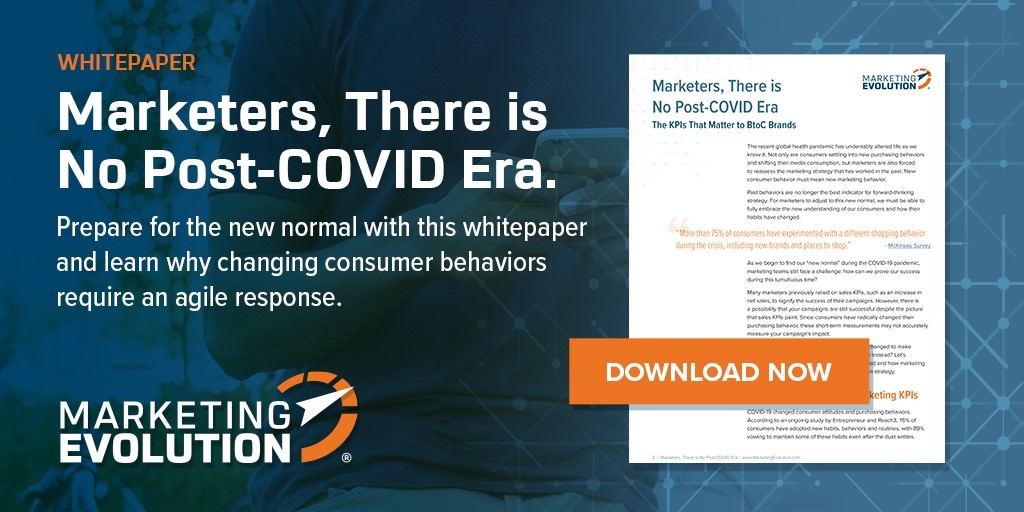3 Examples of Brands Who Changed Their Marketing Strategy
If you look at the way advertising efforts look and feel today, you might notice that they’re vastly different from ten years ago. Each year, the complexity of media channels grows for marketers. In order to optimize campaigns for ROI, marketers need the ability to quickly and efficiently adapt to the changes within the ecosystem that impact their marketing efforts across channels, media, and messaging.
Today’s consumers expect more from their marketing, and in the same vein, expect personalized conversations between themselves and the brands they purchase from. This paradigm shift has forced brands to either adapt to the new consumer trends or let their marketing efforts wither on the vine. In the past, the focus for brands was strictly to push as much messaging out to the public as possible in hopes of sparking more consumer engagement.
Today, however, this is no longer the case. Brands need to focus on targeting the best audiences possible, leveraging person-level insights to understand the optimal marketing mixes, messaging, and timing that resonate with target audiences. Let’s explore why it’s important to develop marketing strategies that are flexible enough to change with the consumer landscape by taking a look at three brands that successfully changed their media plans to adapt to these changes.
Why Adaptability Matters in Today’s Consumer Landscape
Brands must overcome the hurdles of promoting their products and services to consumers whose expectations and behaviors constantly change. However, many organizations are still relying on outdated media planning, tailored to the preferences and trends of past consumers. In doing so, marketers are letting their efforts fall by the wayside, placing the wrong combination of messages, timing, and media channels in front of consumers.
To ensure that media planning is as efficient as possible, brands need to have the capability to identify modern consumer trends in real-time, and subsequently adapt their media mixes accordingly. In doing so, brands will be able to consistently reach the consumers who want to engage with them. By adopting a flexible media planning strategy that provides enough flexibility to change plans based on quality consumer insights, marketers can quickly respond to marketplace changes, properly capitalizing on opportunities for marketing ROI optimization, while addressing any factors that might hinder marketing efforts.
For example: Say the majority of your media spend has historically focused on traditional broadcast channels like television, radio, etc. However, as consumers began to adopt more streaming based services, your media wasn’t generating the ROI you’ve seen in the past. You can then leverage person-level insights to see the specific trends that consumers are following and adapt your media plan to focus on choosing the best advertising channels to push the right messages, at the right time.
Three Examples of Brands Who Changed Their Marketing Strategy
The consumer landscape changes constantly. How marketers adapt to those changes is the difference between media mix optimization success and lost ROI opportunity. Let’s take a look at a few brands that have successfully shifted their media planning strategy:
1. Ford Motors Addresses Ride-Sharing Services
Ever since the Model T rolled off the line, Ford has been a staple brand in the automotive industry. However, as the modern consumer landscape shifted, more and more consumers have adopted ride-sharing services like Uber and Lyft. This industry-changing shift had a drastic impact on the number of cars consumers were purchasing compared to the days before ride-sharing made its breakthrough. By identifying this shift early on, Ford announced that it would only be selling trucks and SUVs in North America. This change consolidates their media planning, focusing their efforts on the products that have the most value amid the shifting landscape, helping to maximize ROI and mitigate the potential for wasted advertising.
2. Warner Bros Studios Utilizes Consumer Analytics
When Warner Bros. was preparing their marketing efforts for their upcoming movie, PAN, they decided to incorporate flexibility into their media planning, and turned to marketing analytics gathered from big data to discover new insights into consumer trends. Looking at behaviors, engagement patterns, and audience segments, Warner Bros changed their media plan to focus on the person-level, updating their strategies to identify the right channels and messaging to deliver in the advertising efforts. The result was a 26% increase in ROI that influenced media planning for additional campaigns.
3. Dollar Shave Club Shifts to Customer Retention
When the direct to consumer brand, Dollar Shave Club entered the landscape, their business model helped revolutionize the influx of “subscription products” that we see today. However, it was their media planning and marketing campaign efforts that took the brand from viral video to industry innovator. When Dollar Shave Club began gaining traction, they understood the importance of creative messaging. They found their message—that razors are a pain to buy and their service makes it simple—and stuck with it. However, as they gained traction, and the brand went from breakout name to recognized brand, Dollar Shave Club wisely changed their media planning to focus on customer retention, leveraging new media strategies to focus on their shifted needs.
Final Thoughts
Modern marketers are constantly battling an evolving consumer landscape. However, the brands that can actively identify the changing trends and patterns within their markets have a unique opportunity to shift their media planning and capitalize on the new trends. Brands like Ford, Warner Bros., and Dollar Shave Club understand the need for flexible media planning and analytics, and have demonstrated the profound impact it has on generating marketing ROI. With a tool like Marketing Evolution’s Scenario Planner, organizations can test modified budgets, target audiences, KPIs and media mixes to uncover data-driven insights into how to optimize campaign performance in the future.


